Waveforms in Reason
This information describes the sounds and applications of the various waveforms available in Propellerhead's Reason Subtractor synthesizer. It is adapted from work presented on www.psylux.com, which, as of 2014-07, has gone away and become squatted; therefore, we offer a mirror that includes mp3 files of the various waveforms. Subtractor offers 32 basic waveforms, shown below.
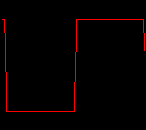
A theoretically perfect square wave alternates between two states, low and high, has pristine transition edges, and has an infinitely fast rise time, meaning the state changes instantaneously and with no other side-effects such as overshoot or ringing. This audio file is as near to a "perfect" square wave as Reason Subtractor is able to produce, and the graphic looks nearly perfect (except for the slightly slanted vertical lines which, theoretically, should be invisible and perfectly vertical indicating instantaneous change).
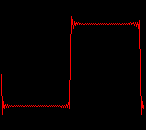
In reality, nothing seems perfectly instantaneous, and fast changes always have side-effects such as overshoot and dampened ringing (see Gibbs Phenomenon). One result is slightly different harmonic content in which some higher frequencies are slightly enhanced. This audio file and graphic have purposefully had the overshoot and ringing exaggerated for example. However, few people listen to square waves.
Below, each waveform's fundamental note played is A3, or A below middle C, or 220 Hz (middle C is 261.626Hz & See Also ). Therefore, each spectrogram shows that 220Hz fundamental frequency peak just to the right of the 200 Hz line. All other peaks represent harmonics generated by the waveform, characteristically decending in amplitude as the distance from the fundamental peak (note) increases.
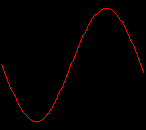
Sine -- The simplest possible waveform, having no harmonics (overtones), and producing a neutral, soft timbre.

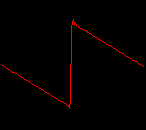
Sawtooth -- This 'general purpose' sawtooth waveform contains all harmonics and has a bright and rich sound.


Square -- Contains only odd number harmonics (3rd, 5th, 7th, ...), producing a distinct, hollow sound.

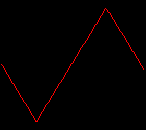
Triangle -- Generates only a few harmonics, spaced at odd harmonic numbers, producing a flute-like sound having a slightly hollow character.

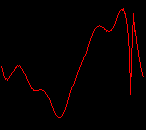
Waveform 5 -- Emphasizes higher harmonics, somewhat like a sawtooth wave only slightly less bright.

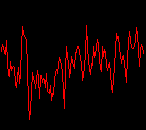
Waveform 6 -- Gives a rich, complex harmonic structure, suitable for emulating the sound of an acoustic piano.

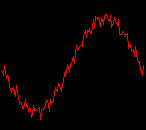
Waveform 7 -- Generates a glassy, smooth timbre. Good for electric piano-type sounds.

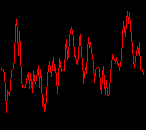
Waveform 8 -- Suitable for keyboard-type sounds such as harpsichord or clavinet.


Waveform 9 -- Suitable for electric bass-type sounds.

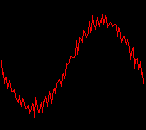
Waveform 10 -- Similar to 7 but with denser higher frequency content. Good waveform for deep, sub-bass sounds.


Waveform 11 -- Produces a waveform with strong formants, suitable for voice-like sounds.


Waveform 12 -- Produces a metallic timbre, suitable for a variety of sounds.


Waveform 13 -- Produces a waveform suitable for organ-type sounds.

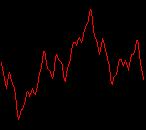
Waveform 14 -- Good for organ-type sounds. Has a brighter sound compared to waveform 13.


Waveform 15 -- Suitable for bowed string sounds, like violin or cello.

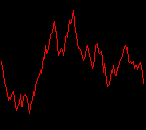
Waveform 16 -- Similar to 15, but with a slightly different character.

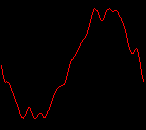
Waveform 17 -- Suitable for string-type sounds.

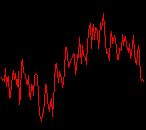
Waveform 18 -- Rich in harmonics and suitable for steel string guitar-type sounds.

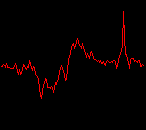
Waveform 19 -- Suitable for brass-type sounds.

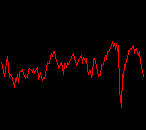
Waveform 20 -- Suitable for muted brass-type sounds.

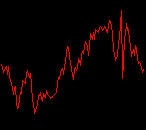
Waveform 21 -- Suitable for saxophone-like sounds.


Waveform 22 -- Suitable for brass and trumpet-type sounds.

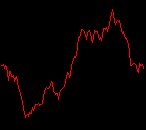
Waveform 23 -- Good for emulating mallet instruments such as marimba.

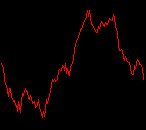
Waveform 24 -- Similar to 23, but with a slightly different character.

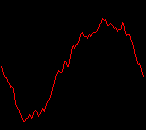
Waveform 25 -- Suitable for guitar-type sounds.

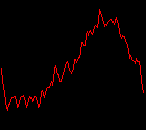
Waveform 26 -- Good for plucked string sounds, like harp.


Waveform 27 -- Suitable for mallet-type sounds (see 23-24), but has a brighter quality, good for vibraphone-type sounds.

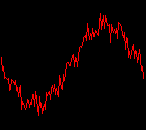
Waveform 28 -- Similar to 27, but with a slightly different character.

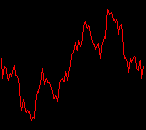
Waveform 29 -- Has complex, enharmonic overtones, suitable for metallic bell-type sounds.


Waveform 30 -- Similar to 29, but with a slightly different character. By using FM (see page 104) and setting the Osc Mix to Osc 1, this and the following two waveforms can produce noise.

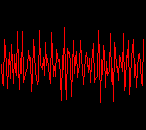
Waveform 31 -- Similar to 30, but with a slightly different character.

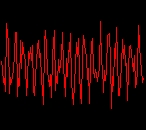
Waveform 32 -- Similar to 30, but with a slightly different character.

Material herein added and updated constantly; presented for inspirational and educational purposes per Fair Use.
Last modified 21 Aug 2025
